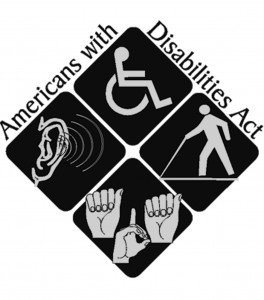 1. What’s the ADA?
1. What’s the ADA?
ADA stands for the Americans with Disabilities Act. This civil rights law was passed on July 26, 1990 to help secure the rights and freedoms that disabled citizens are entitled to. It was expanded in 2008 by the ADA Amendments Act.
2. Why do we need the ADA?
America is known “as the land of opportunity,” but discrimination prevents many disabled people from participating in everyday life. People who are disabled are regularly denied access to businesses, hospitals, schools, workplaces, and many other locations. Unfortunately, a lack of cultural understanding about disabilities results in a prejudiced population.
3. Who is the ADA for?
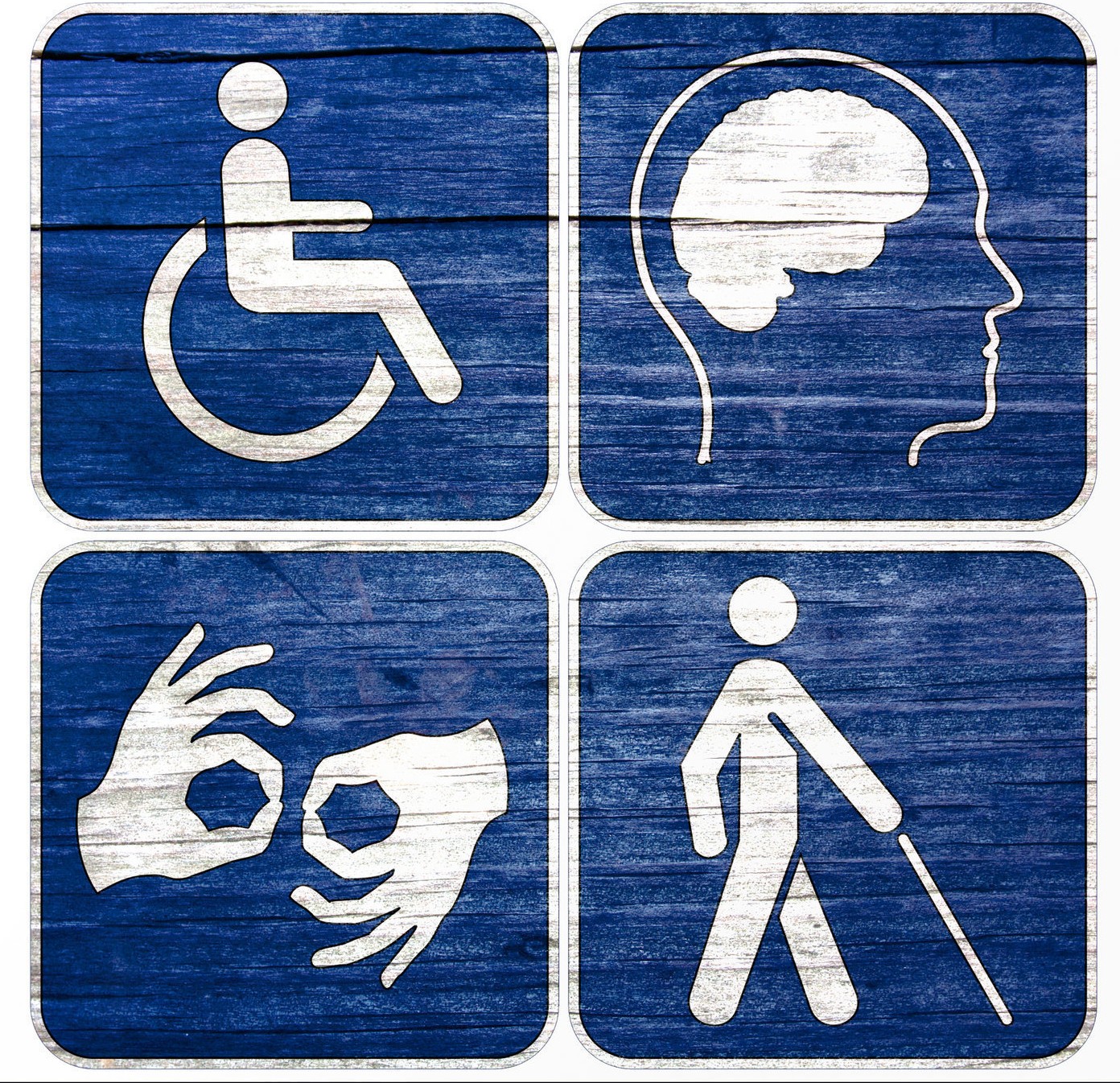 From deafness to mobility issues to intellectual disabilities, the ADA protects the rights of ALL Americans who have mental and/or physical medical conditions. The list of disabilities also includes autism, cancer, cerebral palsy, diabetes, epilepsy, HIV, multiple sclerosis, muscular dystrophy, major depressive disorder, bipolar disorder, post-traumatic stress disorder, obsessive compulsive disorder, schizophrenia, and other physical or mental health conditions.
From deafness to mobility issues to intellectual disabilities, the ADA protects the rights of ALL Americans who have mental and/or physical medical conditions. The list of disabilities also includes autism, cancer, cerebral palsy, diabetes, epilepsy, HIV, multiple sclerosis, muscular dystrophy, major depressive disorder, bipolar disorder, post-traumatic stress disorder, obsessive compulsive disorder, schizophrenia, and other physical or mental health conditions.
4. How does the ADA apply to people who are deaf?
The ADA requires public and private entities to consider the needs of people who are deaf. Living in a large multicultural country, entities must take responsibility to be accepting and competent of other lifestyles. Instead of just assuming every person who enters a business or uses the services of an organization is able to hear, the ADA requires these entities to plan for deaf consumers.
5. How does the ADA effect jobs?
 Title I: Employment is a critical piece of the ADA which helps deaf individuals access employment opportunities. It prohibits employers from inquiring about the existence, nature, or severity of a disability or medical condition until after a job offer has been made. Title I makes it clear that organizations may not reject qualified job candidates on the basis of their disability, and requires employers to provide “reasonable accommodations” for deaf employees.
Title I: Employment is a critical piece of the ADA which helps deaf individuals access employment opportunities. It prohibits employers from inquiring about the existence, nature, or severity of a disability or medical condition until after a job offer has been made. Title I makes it clear that organizations may not reject qualified job candidates on the basis of their disability, and requires employers to provide “reasonable accommodations” for deaf employees.
6. What is a reasonable accommodation?
Reasonable accommodation often calls for a minor alteration to the typical communication strategy, which will vary on a case-by-case basis. For deaf individuals who use ASL as their primary form of communication, a qualified sign language interpreter is generally the best accommodation for things like meetings, where important information will be exchanged. Other deaf or hard of hearing employees will prefer a text version of the meeting provided by computer aided transcription services (CART).
For brief interactions, say the boss just needs a little more information on a report, an email exchange might be sufficient, or a Video Relay Service might be utilized. The best way to figure out what a reasonable accommodation might be for a certain situation is to simply ask the deaf individual.
7. Where else does the ADA apply?
 Under Title II, agencies which operate at a local or state level are required to provide equal access to all services offered by the organization. This includes public hospitals, municipal government buildings, public schools, police stations, and public transportation. A public entity must ensure that its communications with deaf citizens are as effective as communications with others.
Under Title II, agencies which operate at a local or state level are required to provide equal access to all services offered by the organization. This includes public hospitals, municipal government buildings, public schools, police stations, and public transportation. A public entity must ensure that its communications with deaf citizens are as effective as communications with others.
Title III expands the ADA to privately owned places of public accommodation and commercial facilities, such as business offices, social service centers, entertainment events, airports and so on. With the exception of private clubs and religious organizations, almost any place open to the public is required to provide some form of auxiliary aid, interpreter, or CART service for deaf/HoH patrons upon request. Deaf individuals aren’t asking for special treatment, they simply expect the same quality of access as everyone else.
8. What steps should be taken to ensure civil rights are not violated?
 People who are deaf need to be aware of their rights and ask, preferably in writing, for the accommodations they are entitled to receive under the ADA. I suggest going beyond the gatekeepers, who are often secretaries and administration professionals, to contact management or the HR department. Take the request up the chain of command.
People who are deaf need to be aware of their rights and ask, preferably in writing, for the accommodations they are entitled to receive under the ADA. I suggest going beyond the gatekeepers, who are often secretaries and administration professionals, to contact management or the HR department. Take the request up the chain of command.
If they are still denied these accommodations, deaf people can contact a local advocacy organization or a licensed civil rights lawyer. While a lawsuit is not the ideal course of action, discrimination based on disability is an act of oppression. Liability lawsuits are often far more costly than providing equal access in the first place.
9. How can businesses ensure they are ADA compliant?
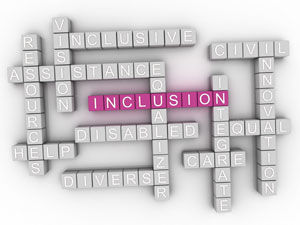 Awareness about these issues usually begins from the top level down. All employees, but especially those who work in administration and management positions, should receive thorough cultural competency training. Additionally, we need to see more disabled employees and consultants in the workforce. The more the general population is exposed to disability, the better they will be able to understand the needs of disabled individuals.
Awareness about these issues usually begins from the top level down. All employees, but especially those who work in administration and management positions, should receive thorough cultural competency training. Additionally, we need to see more disabled employees and consultants in the workforce. The more the general population is exposed to disability, the better they will be able to understand the needs of disabled individuals.
10. How does the ADA help everyone?
At the end of the day, most deaf or otherwise disabled people just want the opportunity to participate in society. Diversity is a great asset, and providing reasonable accommodation for our diverse population should be an expected cost of doing business. Welcoming deaf individuals into all spaces is the law, yes. But it is also the right thing to do.














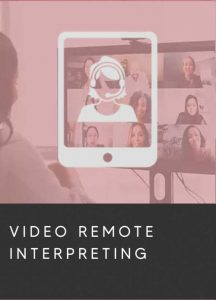


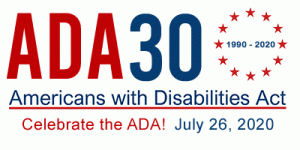
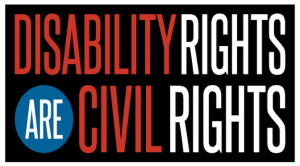 Since 1990, groups and individuals within the Disability Community have worked, advocated, litigated, protested, and lobbied to make incredible advancements toward equal access with the support of the ADA. As time goes on, we are beginning to see inclusive elements being built right into organizations and institutions – from
Since 1990, groups and individuals within the Disability Community have worked, advocated, litigated, protested, and lobbied to make incredible advancements toward equal access with the support of the ADA. As time goes on, we are beginning to see inclusive elements being built right into organizations and institutions – from 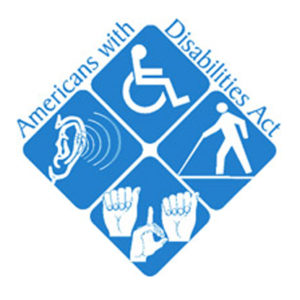 July 26 marks the anniversary of the Americans with Disabilities Act: a set of laws established to help people with disabilities gain access to society that was simply not designed for them. Since 1990, this landmark piece of legislation has improved the lives of millions of Americans by providing clarification regarding their rights to access— whether that means built-in wheelchair ramps, requesting ASL interpreters, or allowing service animals into buildings— and offering legal recourse for individuals whose rights are violated.
July 26 marks the anniversary of the Americans with Disabilities Act: a set of laws established to help people with disabilities gain access to society that was simply not designed for them. Since 1990, this landmark piece of legislation has improved the lives of millions of Americans by providing clarification regarding their rights to access— whether that means built-in wheelchair ramps, requesting ASL interpreters, or allowing service animals into buildings— and offering legal recourse for individuals whose rights are violated.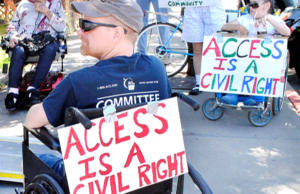 Without the hard work of determined disability rights activists, the ADA would never have been passed; and without ongoing advocacy efforts, little real change might have come from the legislation. People who do not need to reference the ADA on a regular basis to get their basic needs met are frequently unaware of their obligation to ensure equal access to their establishment / service / business. In the years since the ADA became law, people with disabilities have had to consistently perform the labor of educating people about their disabilities and what it means to be disabled in a world that favors able-bodied individuals. They must also be willing to challenge organizations to go beyond bare minimum compliance, which can sometimes mean taking on large institutions in a public way.
Without the hard work of determined disability rights activists, the ADA would never have been passed; and without ongoing advocacy efforts, little real change might have come from the legislation. People who do not need to reference the ADA on a regular basis to get their basic needs met are frequently unaware of their obligation to ensure equal access to their establishment / service / business. In the years since the ADA became law, people with disabilities have had to consistently perform the labor of educating people about their disabilities and what it means to be disabled in a world that favors able-bodied individuals. They must also be willing to challenge organizations to go beyond bare minimum compliance, which can sometimes mean taking on large institutions in a public way.
 Each time a person takes it upon themselves to challenge the institution that oppresses them, they remove a barrier for the next person— no matter how big or small. This incremental progress adds up over time. If your rights are violated, pursue further action. If your needs are not adequately met, provide feedback and pursue further action. The advocacy and awareness that each person spreads works toward creating a more educated society with advanced views of disability. Pushing back is important work!
Each time a person takes it upon themselves to challenge the institution that oppresses them, they remove a barrier for the next person— no matter how big or small. This incremental progress adds up over time. If your rights are violated, pursue further action. If your needs are not adequately met, provide feedback and pursue further action. The advocacy and awareness that each person spreads works toward creating a more educated society with advanced views of disability. Pushing back is important work!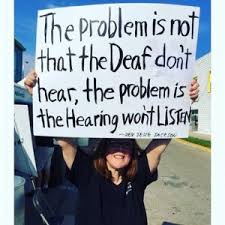 But what about allies? How can people who are not deaf or disabled help, without their position of able-bodied privilege resulting in further oppression? Where to get started?
But what about allies? How can people who are not deaf or disabled help, without their position of able-bodied privilege resulting in further oppression? Where to get started?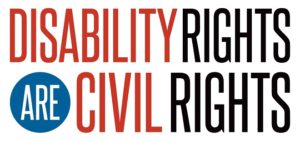 The ADA in action is more of a tool for people with disabilities than any kind of guarantee. This set of legislation only works when it is enforced, and it is up to each member of our society to help enforce it.
The ADA in action is more of a tool for people with disabilities than any kind of guarantee. This set of legislation only works when it is enforced, and it is up to each member of our society to help enforce it. t’s an exciting time to live in America! All across the country, activists are successfully raising awareness about social injustice and amplifying the voices of marginalized groups. While we gain ground in the fight for equality, it can be easy to forget that not so long ago people with disabilities were openly excluded from all areas of public life. Young people today might not remember that there was a time where disabled children were quietly forgotten in schools, and disabled adults only dreamed of basic access to jobs, medical care, and popular culture. One piece of landmark legislation changed all that.
t’s an exciting time to live in America! All across the country, activists are successfully raising awareness about social injustice and amplifying the voices of marginalized groups. While we gain ground in the fight for equality, it can be easy to forget that not so long ago people with disabilities were openly excluded from all areas of public life. Young people today might not remember that there was a time where disabled children were quietly forgotten in schools, and disabled adults only dreamed of basic access to jobs, medical care, and popular culture. One piece of landmark legislation changed all that.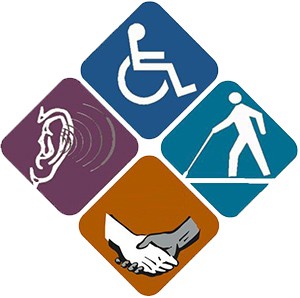 The
The 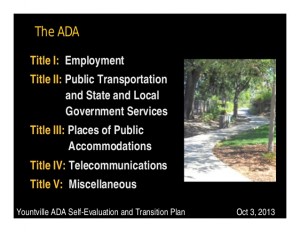 Unfortunately, progress doesn’t happen overnight. The whole country did not immediately understand and begin accommodating the needs of disabled individuals the day the ADA was passed. To further establish these rights, several amendments were added to the legislation. Passed in 1990 and updated in 2004, the Individuals with Disabilities Education Act (IDEA), formerly known as Public Law 94-142, requires public schools to recognize the right of children with disabilities to receive a free public education of the same quality as their peers. The law mandates that qualified individuals in public schools must identify the needs of each student, and that the school must make reasonable accommodation to meet these needs. Promoting education is a critical step toward equality.
Unfortunately, progress doesn’t happen overnight. The whole country did not immediately understand and begin accommodating the needs of disabled individuals the day the ADA was passed. To further establish these rights, several amendments were added to the legislation. Passed in 1990 and updated in 2004, the Individuals with Disabilities Education Act (IDEA), formerly known as Public Law 94-142, requires public schools to recognize the right of children with disabilities to receive a free public education of the same quality as their peers. The law mandates that qualified individuals in public schools must identify the needs of each student, and that the school must make reasonable accommodation to meet these needs. Promoting education is a critical step toward equality.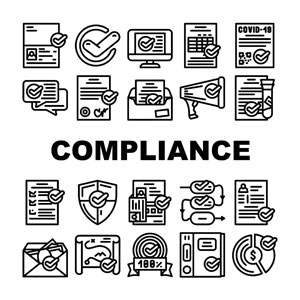 Exclusion from everyday life keeps people in a cycle of oppression. Prior to the ADA legislation, it was nearly impossible to break this cycle. Let’s say a deaf student began to fall behind in school. Instead of providing the deaf student with communication access in the classroom (an interpreter or note taker), the administration would just move the student to a remedial class. This student might be absolutely brilliant, but because they were unable to access the materials or participate in classroom dialogue, they would be sent to a slower learning group. If this same student pursued professional development elsewhere, for example attending seminars or networking events, they would encounter yet another barrier: negative attitudes from organizers who felt providing equal access was a burden. Now imagine this individual applying for jobs. Employers would be thrilled to interview such a qualified candidate, until they discovered that the applicant was deaf and required a few workplace modifications to perform their duties. Without any federal regulation, discrimination was shockingly common and the cycle of oppression was allowed to continue.
Exclusion from everyday life keeps people in a cycle of oppression. Prior to the ADA legislation, it was nearly impossible to break this cycle. Let’s say a deaf student began to fall behind in school. Instead of providing the deaf student with communication access in the classroom (an interpreter or note taker), the administration would just move the student to a remedial class. This student might be absolutely brilliant, but because they were unable to access the materials or participate in classroom dialogue, they would be sent to a slower learning group. If this same student pursued professional development elsewhere, for example attending seminars or networking events, they would encounter yet another barrier: negative attitudes from organizers who felt providing equal access was a burden. Now imagine this individual applying for jobs. Employers would be thrilled to interview such a qualified candidate, until they discovered that the applicant was deaf and required a few workplace modifications to perform their duties. Without any federal regulation, discrimination was shockingly common and the cycle of oppression was allowed to continue. Opportunities for education and employment are finally opening up, thanks in part to legislation; but also because each day, thousands of disabled people are slowly but surely breaking down barriers and continuing to pave the way for equality. There are deaf teachers working in mainstream classrooms. Deaf dentists, physicians, and therapists who serve the unique needs of their community.
Opportunities for education and employment are finally opening up, thanks in part to legislation; but also because each day, thousands of disabled people are slowly but surely breaking down barriers and continuing to pave the way for equality. There are deaf teachers working in mainstream classrooms. Deaf dentists, physicians, and therapists who serve the unique needs of their community.  Growing up, I witnessed the struggles my mother and other deaf individuals endured when trying to perform everyday activities such as going to the bank or a doctors appointment. I am so grateful to live in this progressive time where the rights of disabled people are recognized and protected by the law. While the ADA definitely improved the quality of life for those with disabilities, I realize that we still have a long road ahead. My young deaf nieces deserve the same freedoms and opportunities to thrive that hearing children have. They deserve to live in a world where people do not judge or reject them just because they use another language. When I think of the world I want my nieces and children to grow up in, I know that the fight for equality has only just begun.
Growing up, I witnessed the struggles my mother and other deaf individuals endured when trying to perform everyday activities such as going to the bank or a doctors appointment. I am so grateful to live in this progressive time where the rights of disabled people are recognized and protected by the law. While the ADA definitely improved the quality of life for those with disabilities, I realize that we still have a long road ahead. My young deaf nieces deserve the same freedoms and opportunities to thrive that hearing children have. They deserve to live in a world where people do not judge or reject them just because they use another language. When I think of the world I want my nieces and children to grow up in, I know that the fight for equality has only just begun. 1. What’s the ADA?
1. What’s the ADA? From deafness to mobility issues to intellectual disabilities, the ADA protects the rights of ALL Americans who have mental and/or physical medical conditions. The list of disabilities also includes autism, cancer, cerebral palsy, diabetes, epilepsy, HIV, multiple sclerosis, muscular dystrophy, major depressive disorder, bipolar disorder, post-traumatic stress disorder, obsessive compulsive disorder, schizophrenia, and other physical or mental health conditions.
From deafness to mobility issues to intellectual disabilities, the ADA protects the rights of ALL Americans who have mental and/or physical medical conditions. The list of disabilities also includes autism, cancer, cerebral palsy, diabetes, epilepsy, HIV, multiple sclerosis, muscular dystrophy, major depressive disorder, bipolar disorder, post-traumatic stress disorder, obsessive compulsive disorder, schizophrenia, and other physical or mental health conditions. Title I: Employment is a critical piece of the ADA which helps deaf individuals access employment opportunities. It prohibits employers from inquiring about the existence, nature, or severity of a disability or medical condition until after a job offer has been made. Title I makes it clear that organizations may not reject qualified job candidates on the basis of their disability, and requires employers to provide “reasonable accommodations” for deaf employees.
Title I: Employment is a critical piece of the ADA which helps deaf individuals access employment opportunities. It prohibits employers from inquiring about the existence, nature, or severity of a disability or medical condition until after a job offer has been made. Title I makes it clear that organizations may not reject qualified job candidates on the basis of their disability, and requires employers to provide “reasonable accommodations” for deaf employees. Under Title II, agencies which operate at a local or state level are required to provide equal access to all services offered by the organization. This includes public hospitals, municipal government buildings, public schools, police stations, and public transportation. A public entity must ensure that its communications with deaf citizens are as effective as communications with others.
Under Title II, agencies which operate at a local or state level are required to provide equal access to all services offered by the organization. This includes public hospitals, municipal government buildings, public schools, police stations, and public transportation. A public entity must ensure that its communications with deaf citizens are as effective as communications with others. People who are deaf need to be aware of their rights and ask, preferably in writing, for the accommodations they are entitled to receive under the ADA. I suggest going beyond the gatekeepers, who are often secretaries and administration professionals, to contact management or the HR department. Take the request up the chain of command.
People who are deaf need to be aware of their rights and ask, preferably in writing, for the accommodations they are entitled to receive under the ADA. I suggest going beyond the gatekeepers, who are often secretaries and administration professionals, to contact management or the HR department. Take the request up the chain of command. Awareness about these issues usually begins from the top level down. All employees, but especially those who work in administration and management positions, should receive thorough cultural competency training. Additionally, we need to see more disabled employees and consultants in the workforce. The more the general population is exposed to disability, the better they will be able to understand the needs of disabled individuals.
Awareness about these issues usually begins from the top level down. All employees, but especially those who work in administration and management positions, should receive thorough cultural competency training. Additionally, we need to see more disabled employees and consultants in the workforce. The more the general population is exposed to disability, the better they will be able to understand the needs of disabled individuals.





